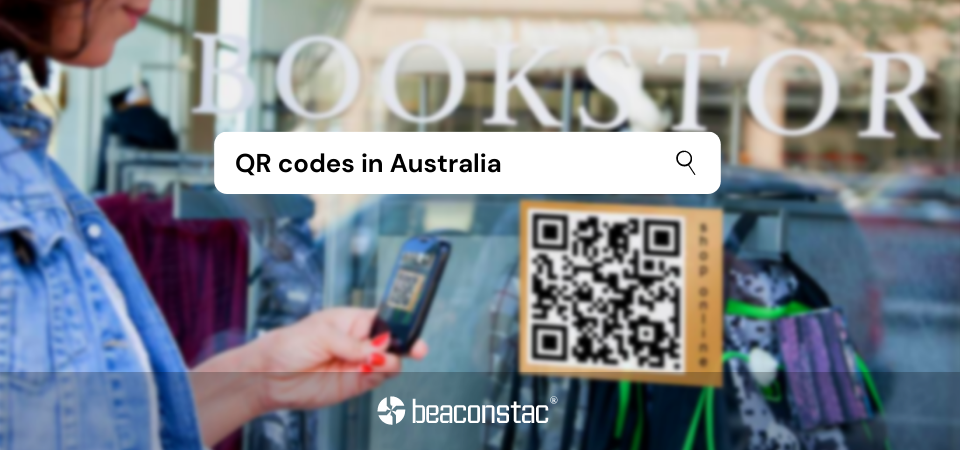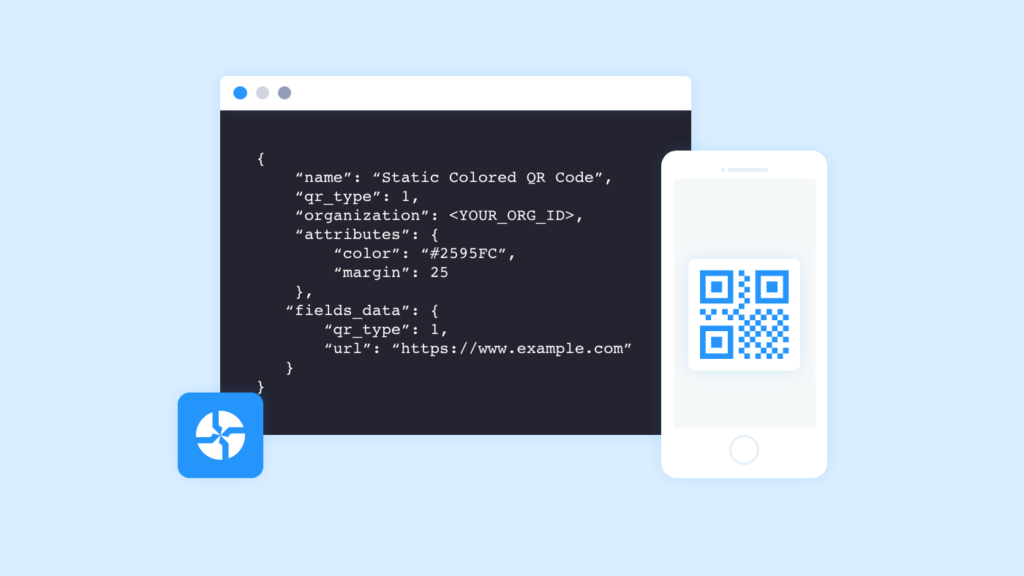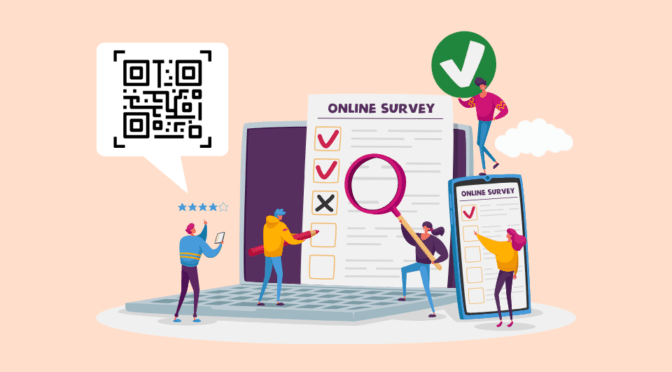💻 Key takeaways:
1. QR Code statistics reveal widespread adoption and usage across various countries and industries. With growing smartphone penetration and advancements in technology, QR Codes have become a ubiquitous tool for bridging the offline and online worlds, facilitating seamless interactions and transactions.
2. Industries such as retail, hospitality, and marketing have witnessed significant growth in QR Code usage, leveraging them for diverse applications such as product promotions, contactless payments, and customer engagement initiatives.
3. Successful QR Code campaigns often involve strategic branding, ensuring that the codes are visually appealing, easily recognizable, and aligned with the brand identity. Additionally, incorporating the latest technology trends such as dynamic QR Codes and augmented reality experiences can enhance engagement and drive better results for QR Code initiatives.
Did you know that a recent survey found that 18.8% of users in the US and the UK strongly agreed that there was a visible increase in QR Code usage since the onset of COVID-19?
The COVID-19 pandemic has kickstarted the usage of QR Codes in top industry verticals – restaurants, retail, and even hotels. Albeit, QR Codes were already popular, the contactless technology and convenience it promotes have somersaulted its usage in recent months.
What do brands like Puma, Nike, IKEA, and Amazon have in common?
QR Codes today are used everywhere, largely for marketing purposes to deliver an enhanced customer experience by brands and businesses of all sizes.
Keeping this in mind, we have compiled 50 QR Code statistics for 2021. This is an extensive list of the most essential QR Code statistics every individual needs to know.

Table of Contents
- Usage by country
- Payments
- Industry
- Growth of QR Codes
- Success of brands using QR Codes
- Advancements in QR Code technology
- Product packaging
- Governments
- Bonus QR Code Statistics
- The unstoppable force of QR Codes
- FAQs
QR Code statistics usage by country – Global and US

Although QR Codes were first invented by a Japanese company, Denso Wave, its inception has largely impacted South East Asia. When people say China is painted with QR Codes, it is true.
P.S. Learn the answers to some of the most frequently asked questions about QR Codes.
The QR Code wave has hit the rest of the world too.
- An estimated 11 million households will scan a QR Code in 2020 in the USA alone. (Statista, 2019)
- Southeast Asia and India will be the largest region to scan QR Codes by 2020 at 15 million and 8 million, respectively. (Uniqode, 2019)
- QR Code usage will be about 10.1 million in Europe by 2020. (Uniqode, 2019)
- Twice as many users scanned a QR Code in Europe and North America in 2018 than in 2015. (Global Web Index, 2019)
- Australia has a 90% mobile phone penetration, and QR Code usage has rapidly grown in the region simultaneously. (Simple, 2019)
- The Middle East and Africa were gradually increasing QR Codes’ use from a low 12% in Q1 2017 to 18% in 2018. (Global Web Index, 2019)
- In Brazil and Europe, QR Code usage is seven and eight per cent of consumers, respectively, scanning QR Codes several times a week. (Packaging Insights, 2019)
- In China, 50% of users scan QR Codes several times a week. (Packaging Insights, 2019)
- The term QR Code was searched 60,000 times in Australia in 2021. (Ahrefs, 2021)
- Queensland government’s official COVID-19 check-in app has been used to check in more than 1 million times. (Brisbane Times, 2021)
QR Code Usage: Payments

QR Code payment has exploded in the past couple of years. From Alipay to Walmart to Amazon, every company is getting on the bandwagon to streamline ease of payments.
Propelled by the simplicity of usage of QR Code usage in payments – China, India, and global; let’s take a look at how big the impact is.
11. China is the world’s largest and fastest-growing country for mobile payments. The transaction volume of third-party mobile payments reached RMB 40.6 trillion in the first quarter, ahead of the USA and the rest of the world. (China Banking News, 2019)
12. The global usage of mobile payments is estimated to expand from USD 348 billion to just under USD 1.3 trillion by 2022. (Research and Markets, 2019)
QR Code payment in Australia
13. The Deloitte Mobile Consumer Survey 2019 found that approximately 90% of Australians use smartphones and a Roy Morgan report shows that about one in ten smartphone owners (10.8%) use them for payments.
Companies that use QR Codes
14. Chinese payment app, Alipay, is the world’s most used payment app in the world apart from social networking apps. 15 million SMB accept Alipay’s QR Code payments in China. (Mobile Transaction, 2019)
15. WeChat, the Chinese multi-purpose app was fourth in place in terms of mobile payment, topped by Facebook, Whatsapp, and Messenger. (Mobile Transaction, 2019)
16. In India, 9 million merchants support Paytm, the digital wallet that uses QR Codes for payments. (Mobile Transaction, 2019)
17. Some of the largest QR Code payments in the Netherlands are iDEAL, Belgium – Bancontact, and Brazil – Cielo and Mercado Pago. (Mobile Transaction, 2019)
18. The largest QR Code payment companies in North America are Apple Pay, PayPal, and Amazon Pay. (Global Web Index, 2019)
19. 10,000 UAE merchants to accept UnionPay QR Code by 2020. (Network International, 2019)
20. Mastercard’s Masterpass QR is making its social debut in Africa as part of its partnership with Facebook to allow consumers to buy a solar energy system and use their phones to make small everyday payments for a lesser price than kerosene lamps. (Mastercard, 2019)
21. LINE Pay, Japan’s largest digital payment system has partnered with WeChat Pay in Japan. (FinExtra, 2019)
22. UnionPay Internation (UPI) QR Code payment is available at 450,000 acceptance points outside of Mainland China, which is up 50% when compared to the first half of 2019. (Union Pay International, 2019)
QR Code Statistics: Industry-wise adoption

In China, QR Codes are used for every purpose and need, right from giving alms to beggars, providing feedback, and gifting.
QR Codes are used in every industry – healthcare, marketing, retail, travel, and sports to name a few. Although marketers did find their niche in QR Codes, other industry verticals have reported success too.

23. The highest penetration of QR Code based on use-cases is for product information (51.5%) followed closely by event information (19.8%), to avail offers (12.5%), and app downloads (8.2%) (comSCORE MOBILENS, 2019)

24. The top source of brand discovery for people who use QR Codes are search engines (45%), TV advertisements (43%), and word-of-mouth (40%). (Global Web Index, 2019)
25. PB Siddhartha College of Arts and Sciences, a college in Andhra Pradesh is attaching QR Codes on trees on the campus to educate their students about their botanical names and medicinal value. (India Today, 2019)
Want to know how to make event organizing more fun by leveraging QR Codes?
QR Code usage: Growth of QR Codes
In 2014, global mobile penetration was just about 48.8%, has increased nearly by 13% today. QR Code as an entity has a mammoth-like growth, scaled to grow at a steady rate in terms of the global QR Code usage.
Take a look at the statistics to see how strong the influence of QR Codes is.
26. Nearly 90% of the world’s population will have access to high-speed internet, attributing to the rise of QR Codes by 2020. (Juniper Research, 2019)
27. In South Africa, the penetration of smartphones is 80%, which is a potential growth for the QR Code market. (GSMA, 2019)

28. Social media platforms such as Instagram, SnapChat, Facebook, and Twitter already have QR Codes. The purpose and the mass reach of social media QR Codes are estimated to grow in folds by 2020. (Mashable, 2019)
29. As we navigate the 2020 COVID pandemic, restaurants of all sizes are using paperless menu QR Codes. The United States alone has 1 million+ restaurants. 52% of them have already switched to QR code menus and the others are catching up. (Uniqode, 2020)
Success of brands using QR Codes

QR Codes pose as an added feature to the already existing identity of any brand. It is the cherry on the cake. Several brands have tasted success by adopting QR Codes; be it customer engagement, increase in ROI or conversion.
These stats are proof that QR Codes have helped brands across the globe in elevating their business in the market.
30. Most Fortune 500 companies have already added QR Codes to their marketing stack such as Nestle, Emirates, Nike, and Puma. (Uniqode, 2019)
31. Group-buying websites like Groupon is the highest indexing of brand discovery (2.22 IDX), with vlogs (2.18 IDX), and stories/articles printed in newspapers (2.08 IDX) closely trailing behind. (Global Web Index, 2019)
32. PayPay, a QR Code-based payment system launched by Noida based One97 Communication backed by SoftBank and Yahoo Japan has managed to sign up 15 million customers within 10 months of its launch. (Indian Express, 2019)

33. Vincle, a software vendor of high-tech solutions, has leveraged QR Codes on different kinds of events along with its marketing and human resources strategy in order to engage users to interact with their brand. The company witnessed more than 90% engagement with the help of QR Codes.
Want to know 15 brands that are killing it with the adoption of QR Codes?
Advancements in QR Code technology

Just when QR Codes started booming, many thought that the technology might never improve or that companies apart from retail might never embrace QR Codes. These QR Code statistics certainly prove otherwise.
34. Google Chrome is developing a QR Code enabled page sharing feature for its Chrome Canary, which might contain its popular dino in the center. (Techdows, 2019)

35. WhatsApp is adding a new feature to let users add new people to their contact list using QR Codes via WhatsApp Web and WhatsApp by 2020. (WhatsApp, 2019)
36. Apple’s in-built QR Code with the latest iOS 13 has a low-light QR Code scanning feature. (Apple, 2019)
37. By 2020, the market share of QR Code/barcode recognition among image recognition technology is forecasted to reach around 17.1% in China. (Statista, 2019)
38. South African based company 4ORT has launched the world’s first “fraud-free” dynamic QR Code. The globally patented algorithm ensures that the users’ unique identities are securely stored within the code, making it impossible for fraudsters to duplicate it. (4ORT, 2019)
QR Code statistics for product packaging

Packaging is more than just placement of the product in a box and including estimated ingredients at the side of the box. QR Codes on product packaging not only help consumers trust the brand because of their transparency but also helps marketers retarget their users to serve them better.
QR Codes on packaging is important. Take a peek at how QR Codes have influenced the packaging industry.
39. In China, 65% of consumers think scanning QR Codes on product packaging instills a blanket of trust. (Packaging Insights, 2019)
40. In Brazil, 75% of shoppers are ready to scan QR Codes on a regular basis to access shopping assistance. (Packaging Insights, 2019)

41. The global QR Code usage QR Code enabled smart packaging is estimated at $5.3 billion and growing at a CAGR of 8% for a projected value of $7.8 billion by 2021. (Packaging Insights, 2019)
42. Kezzler’s TrackEasy system is rolling out QR Codes that will be placed at the bottom of the Friso infant formula packaging to learn more about the product in Mainland China. (Packworld, 2019)
43. In the Asia Pacific region, China, Korea, and Japan have witnessed an 83% increase in the use of QR Codes on product packages between 2014 and 2018. (Global New Product Database, 2019)
QR Code statistics: Adoption by governments
With an increased adoption by various industries, QR Codes are unstoppable. Governments are quickly catching up on the trend and making it mandatory amongst banks and financial institutions to avoid fraudulence and malpractices.

44. Barclays, UK’s largest bank has partnered with Alipay to allow Barclaycard merchants to accept Alipay QR Code payments in the UK. (Mobile Transaction, 2019)
45. In Japan, banks and financial institutions are expected to roll out a unified smartphone payment service using QR Codes in April 2020. (Asian Review, 2019)
46. DBS Bank is collaborating with Singapore’s public healthcare system to roll out Singapore’s Quick Response Code (SGQR) payments by end of 2020. (Business Times, 2019)

47. PayMaya Philippines Inc. becomes the first e-wallet to officially adopt QR Ph, the national quick response code standard launched by Bangko Sentral ng Pilipinas (BSP). (PayMaya Philippines Inc., 2019)
48. India’s unique identification number, AADHAR, has rolled out Secure QR Codes, which contains demographics as well as the photographs of the Aadhar cardholder. (UIDAI, 2019)
49. In October 2019, Banco de Mexico (Banxico), Mexico’s central bank, launched CoDi – a smartphone and QR Code based payment system. (NASDAQ, 2019)
You may want to read: QR Codes on CBD labeling in Utah, Indiana, and Oregon
Bonus QR Code statistics

This chapter contains a mixture of QR Code statistics.
50. Some of the most common types of QR Codes include URL QR Codes, QR Code PDFs, and digital business card QR Codes. (Uniqode, 2019)
51. Consumer usage of QR Codes will be 5.3 billion QR Code coupons to be redeemed by smartphones by 2022 and 1 billion smartphones will access QR Codes. (Juniper Research, 2019)

52. 91% of active iOS users have access to QR Code scanners due to the installation of iOS 12 and above. (App Store, 2019)
53. In Vietnam, the most popular QR Code app used is Zalo (83%). (Statista, 2019)
Bonus QR Code Statistics
Chick-fil-A boosted its app downloads by 14% after using QR Codes in its digital signage. (Mobile Marketer, 2019)
Malaysian eCommerce platform, Lazada’s first in-app facial recognition game, in partnership with Stamp Hunt, leveraged QR Codes at 800 of their outlets garnering their record-breaking sales ever. (Soyacincau, 2019)
The unstoppable force of QR Codes
QR Codes are ubiquitously used everywhere. The future of QR Codes is the usage and penetration into different industry verticals are anticipated to rise in the coming years.
Apple iOS 13’s stealth QR Code reader update and Pixel’s ability to scan QR Codes without Google Lens is clearly an indicator.
A number of companies such as Sephora, American Eagle, and Levis are adding QR Codes to their algorithms stipulating its growth, evidently.
Consumer awareness of QR Codes is at its highest in South East Asian countries. In addition, regions like Europe and the US are catching up on this trend swiftly. A number of countries like India, Philippines, and the UK are even resorting to a nationalized QR Code payment system.
Frequently Asked Questions
1. Do people use QR Codes?
QR Code usage is now more than ever for marketing purposes, payment services, and various industry verticals for other useful use-cases. Thus, it is fair to say that about 60-65% of people use QR Codes on a daily basis for the abovementioned uses.
2. Are QR Codes dead?
No, QR Codes are not dead. In fact, QR Codes are on the rise more than ever since most smartphones are equipped with an in-built QR Code scanner in their cameras.
Keeping this fact into consideration, most industry verticals including hotels, social media influencers, B2B and B2C companies have switched to QR Codes.
QR Codes, particularly editable QR Codes, are affordable, changeable, and trackable that can be acclimated to any use-case.
3. How do I track a QR Code?
A QR Code can be tracked via the QR Code generator’s dashboard feature if it allows. Uniqode’s dashboard allows you to track a QR Code based on its scan, time of the scan, device OS, and the location of the scan.
Uniqode’s dashboard allows you to integrate the QR Code with Google Analytics to deep dive into the customer’s scanning behavior.
Note that only dynamic QR Codes can be tracked, static QR Codes cannot be tracked.
4. Are QR Codes outdated?
No, QR Codes are not outdated.
QR Codes are considered to be one of the most technologically advanced but easy to use, making them relevant to the current age.
5. How long do QR Codes last?
QR Codes do not expire.
QR Codes last as long as the website, landing page, or whatever content the code is linked to is up-to-date. If the linked content is outdated, the QR Code will not be functional.
In the case of dynamic QR Codes, they expire post the free trial even if the content linked to is not outdated.
6. Are QR Codes permanent?
Yes, QR Codes are permanent.
The relevance of QR Codes will continue to rise in the future making them more accessible and affordable, making them permanent.
QR Codes last as long as the website, landing page, or whatever content the code is linked to is up-to-date. If the linked content is outdated, the QR Code will not be functional.
In the case of dynamic QR Codes, they expire post the free trial even if the content linked to is not outdated.
7. How do I create a unique QR Code?
You can create a unique QR Code by customizing it to make it stand out. Change its eyes, template, add a logo, and the color of the QR Code. Also, include a CTA at the bottom so the message is loud and clear.
8. What does QR stand for?
QR – Quick Response Code (QR Code)
9. What information does a QR Code contain?
A QR Code contains more than 4,000 characters. This means that all kinds of media and information can be stored within a QR Code such as audio, video, webpage, location, contact number, and even forms.
The QR Code stores more information than a typical barcode making it more convenient and feasible to use for all kinds of uses.
-
With brands expanding their presence on omnichannel platforms to reach more audiences, learn how QR Codes help brands sync their online and offline marketing strategies to close the loop seamlessly.
-
Trying to build a loyalty program for your brand? Look no further! Check out this complete guide on the best customer loyalty platforms to help pick the best one and foster long-term brand loyalty effectively.
-
Struggling to improve in-store sales and shelf performance rate for your brick and mortar retail store? QR Codes for planograms are the answer you’re looking for.
-
Looking for a design software that fits your requirements? Check out this detailed guide on product packaging design tools with helpful information on how to create an effective packaging design.
-
What led to the surge in the usage of QR Codes in Australia? Is it because of contact tracing or payments? What does the future hold? Let’s find out.
-
Want to know how to add a QR Code API to your app without complex troubleshooting? Read to find out!
















